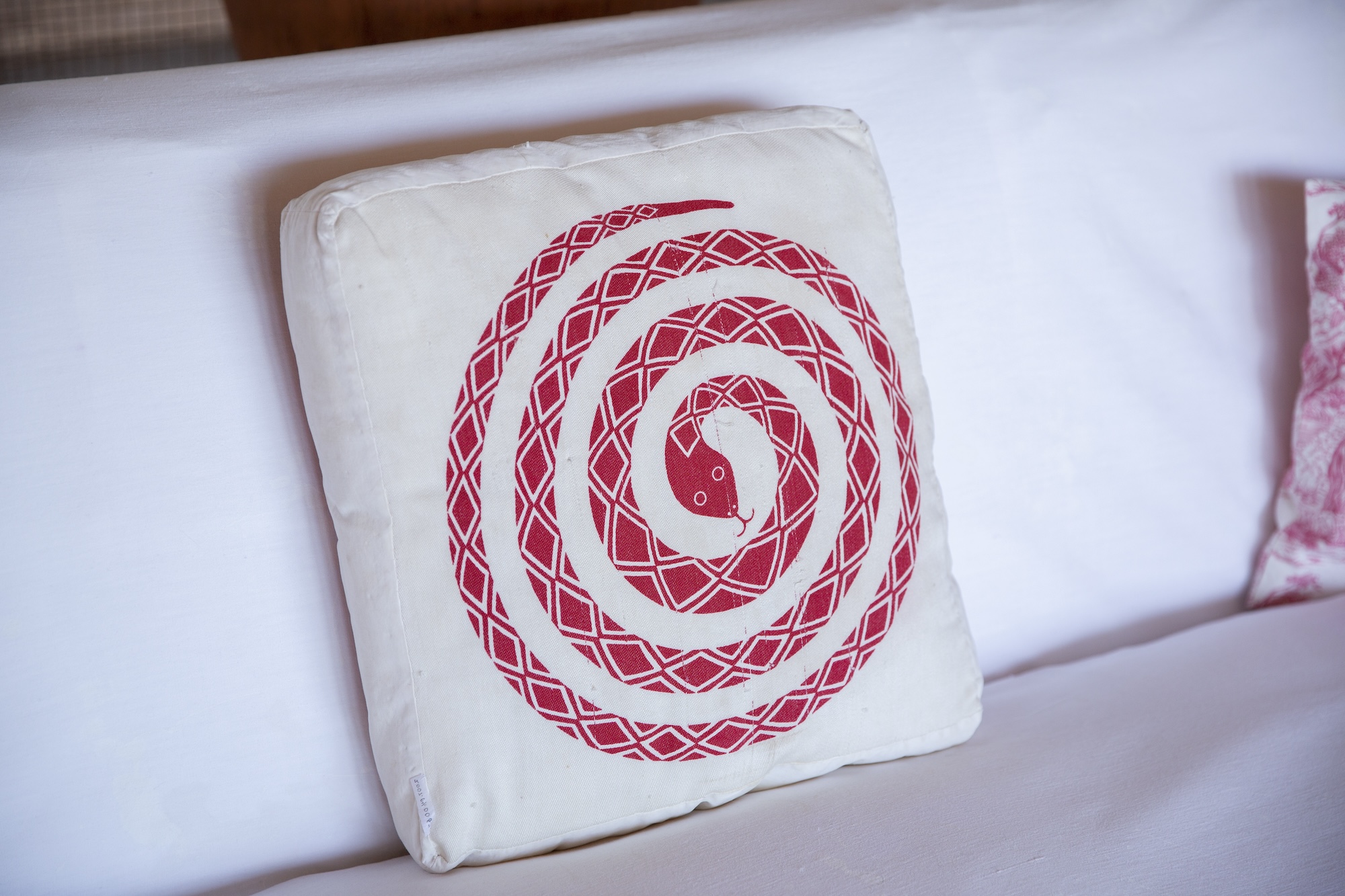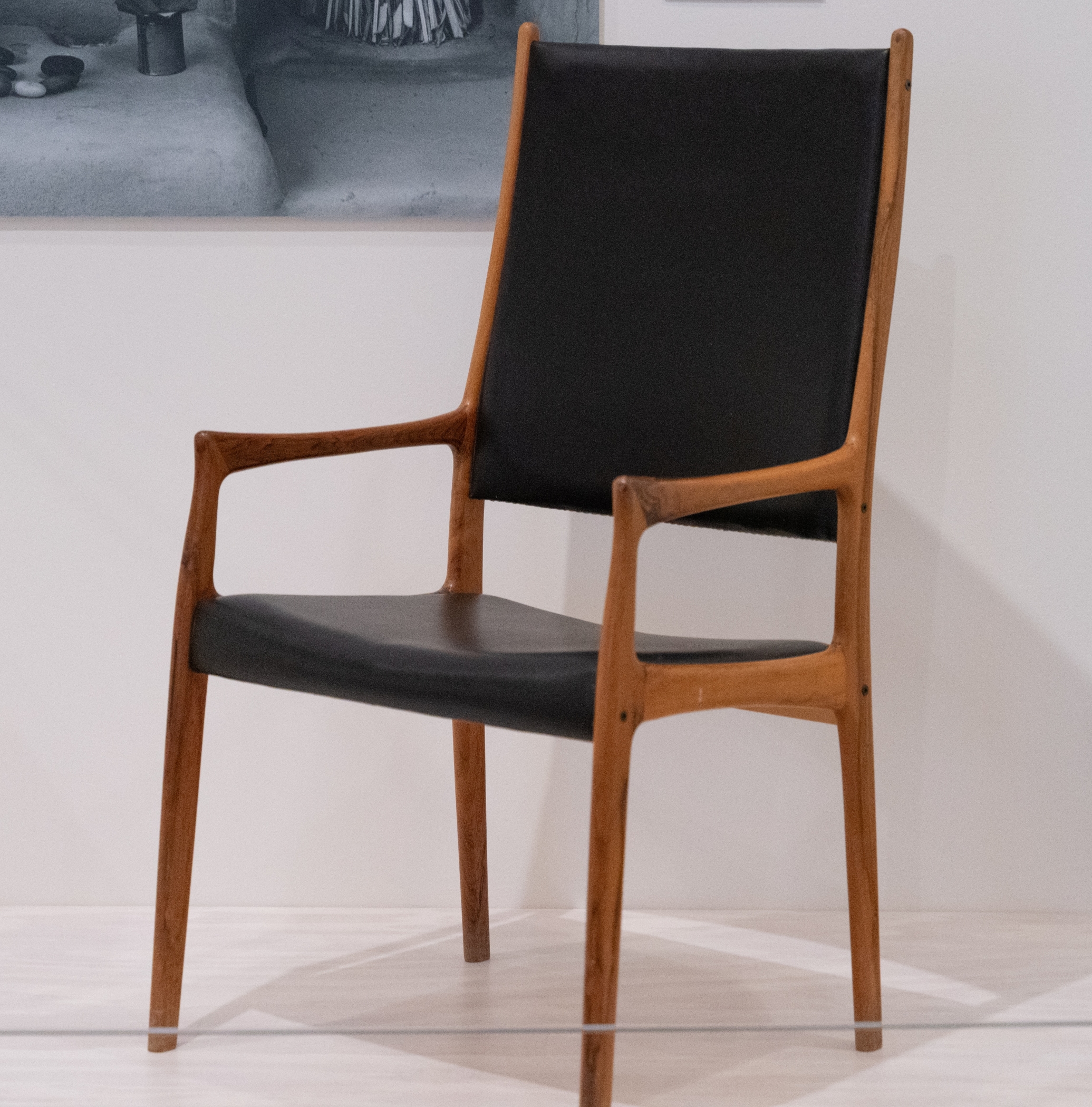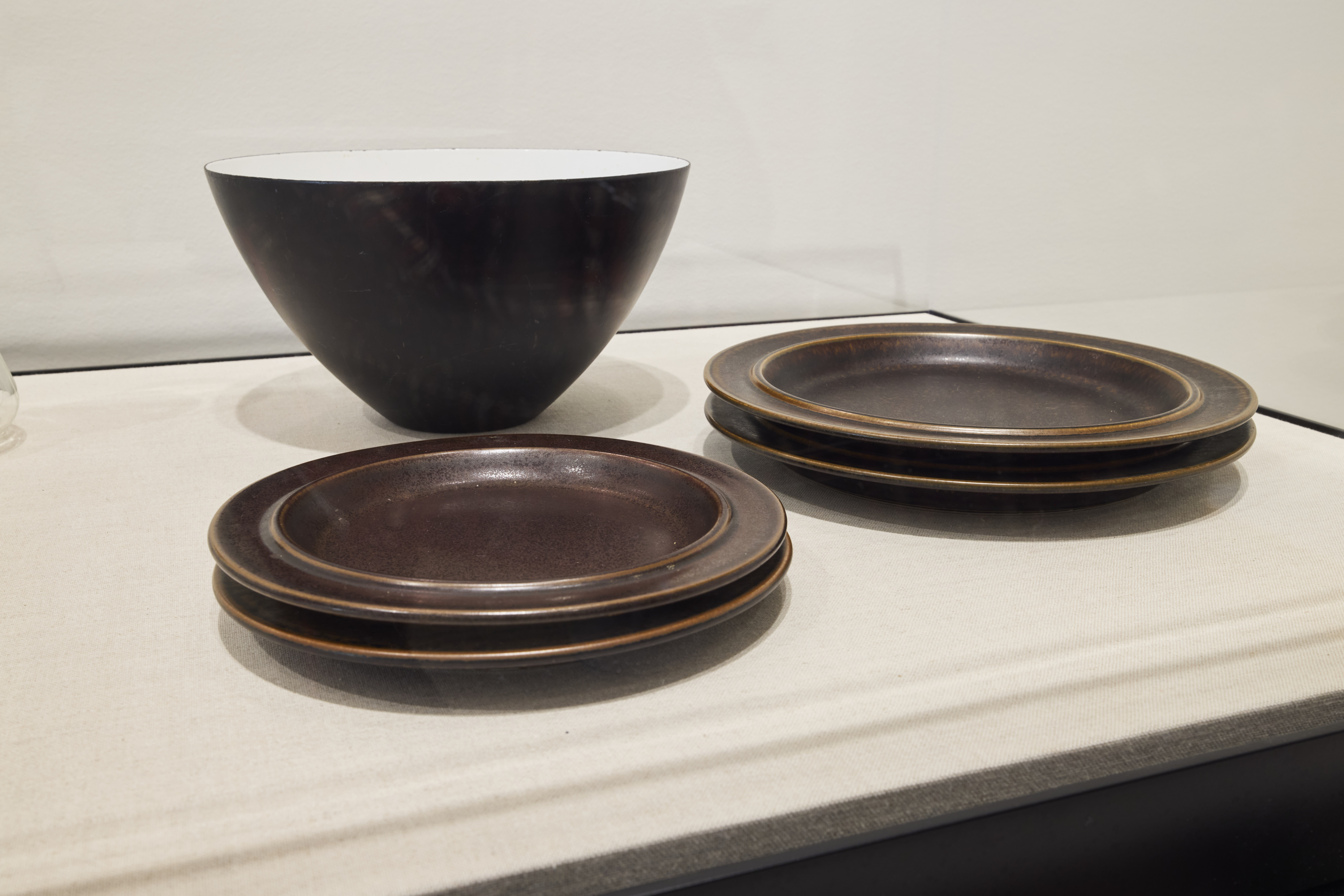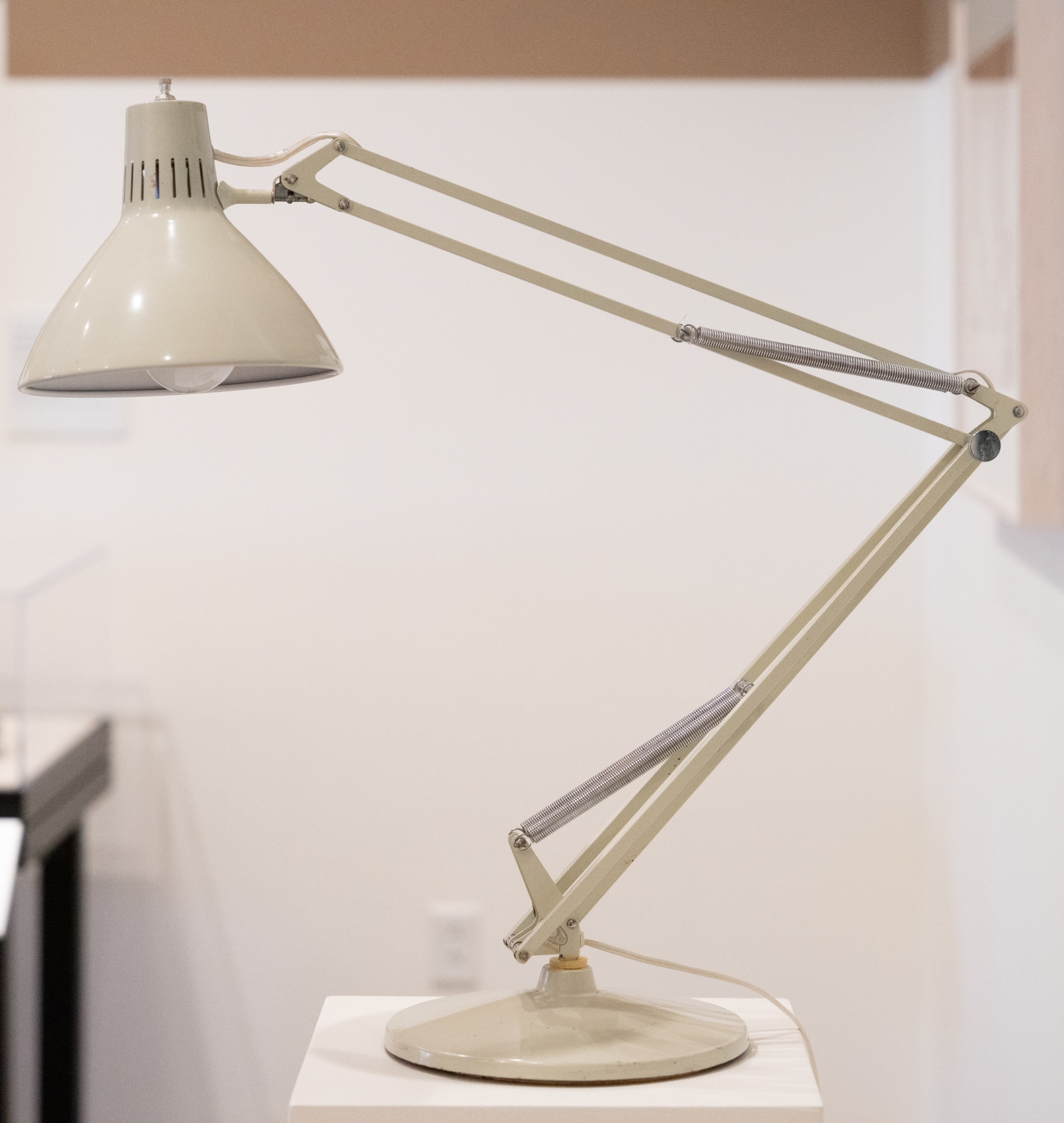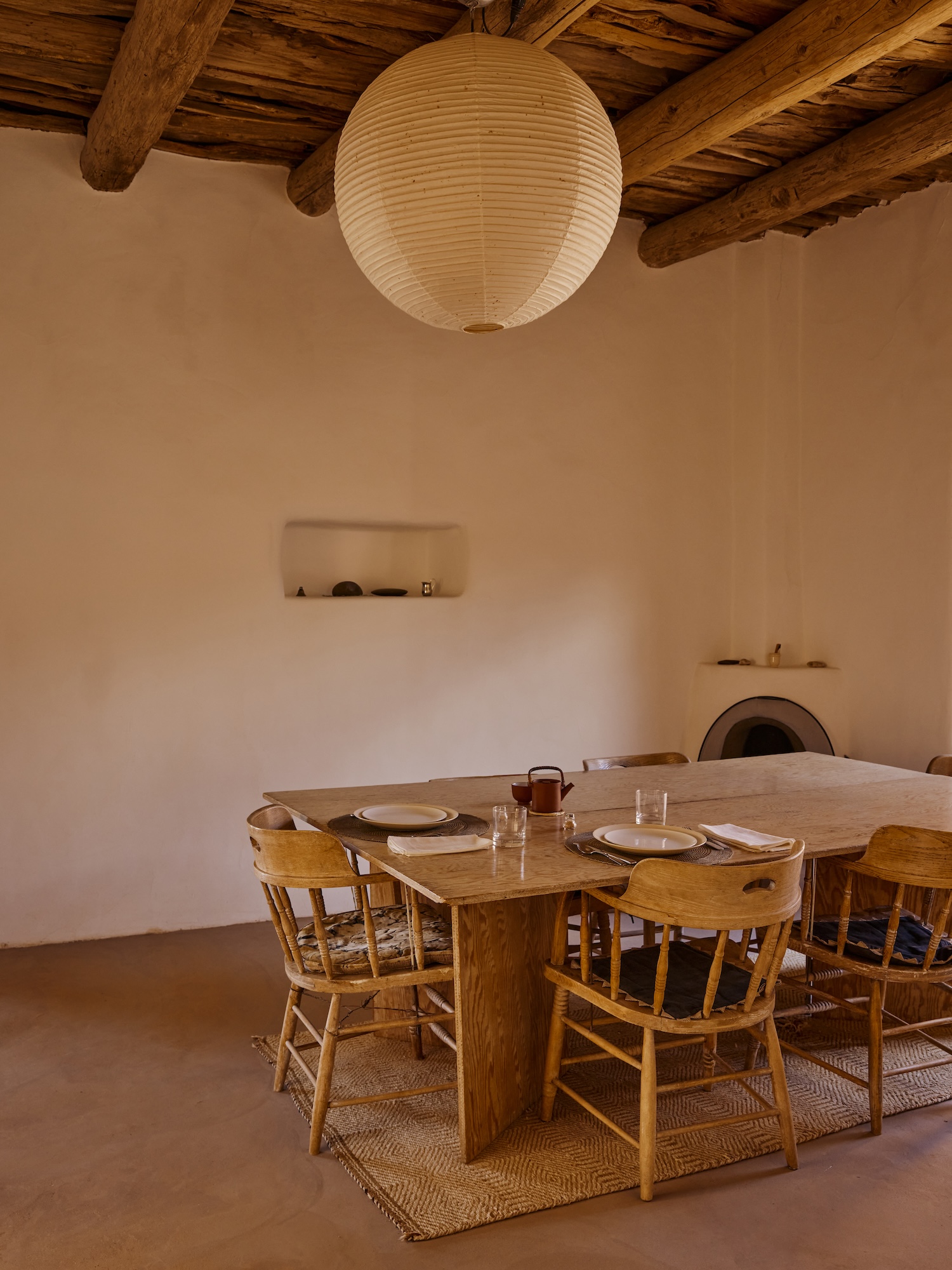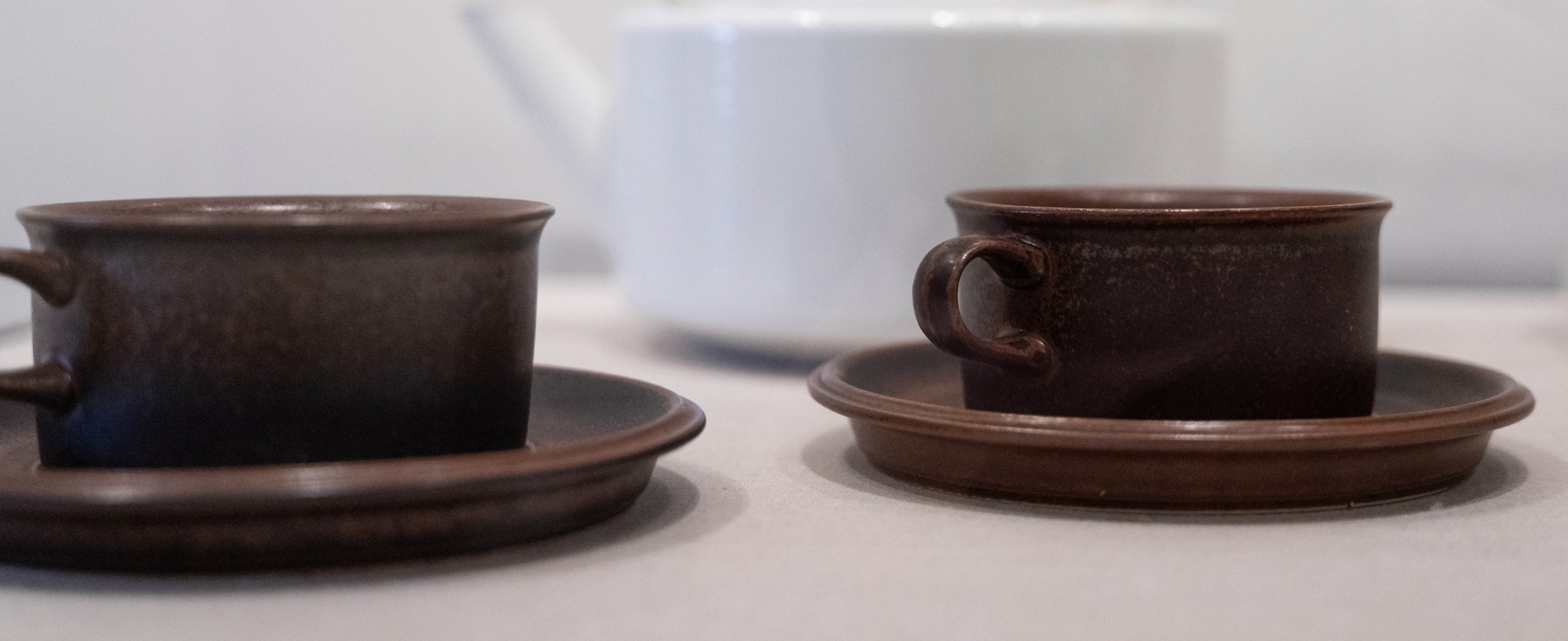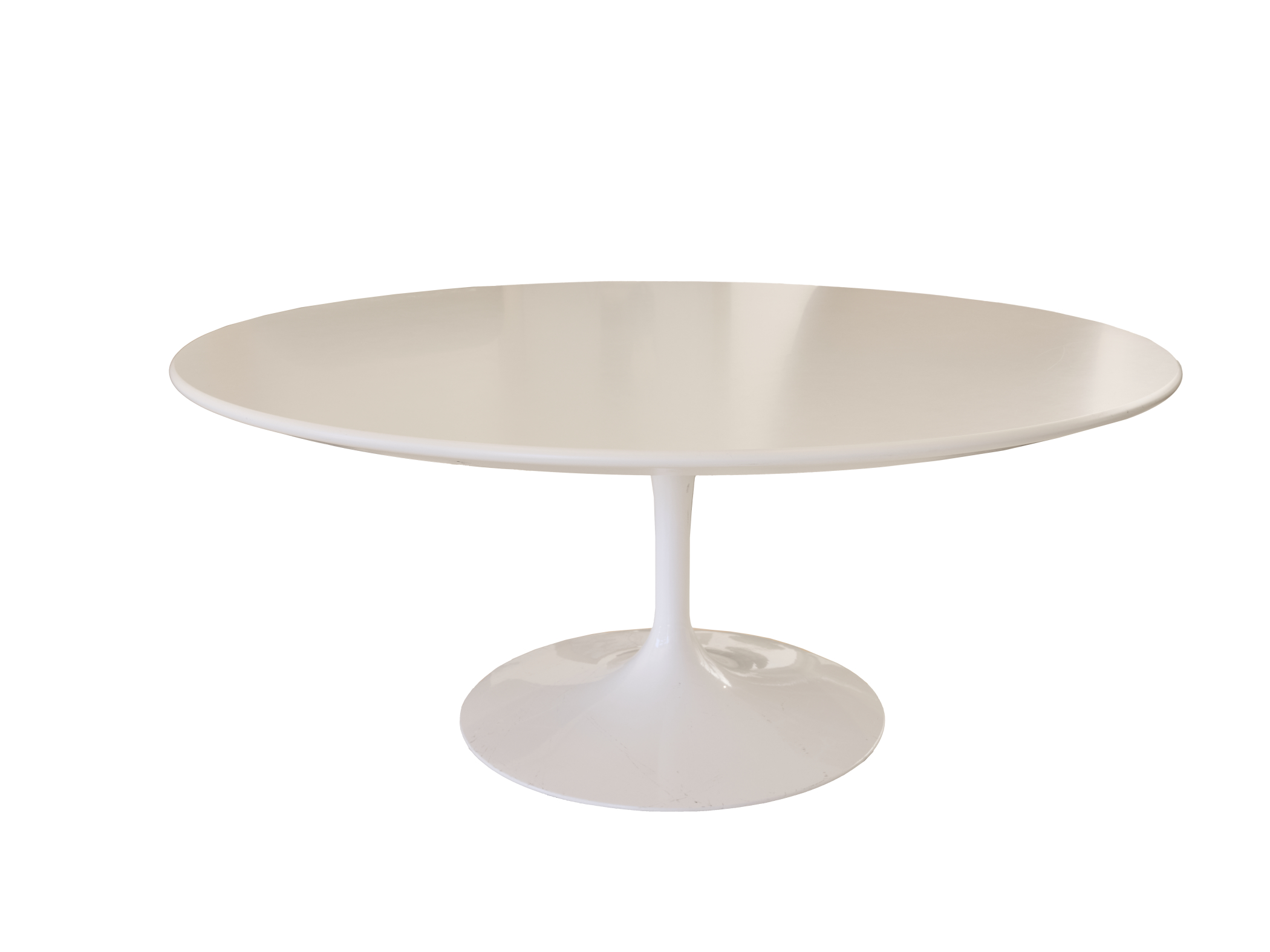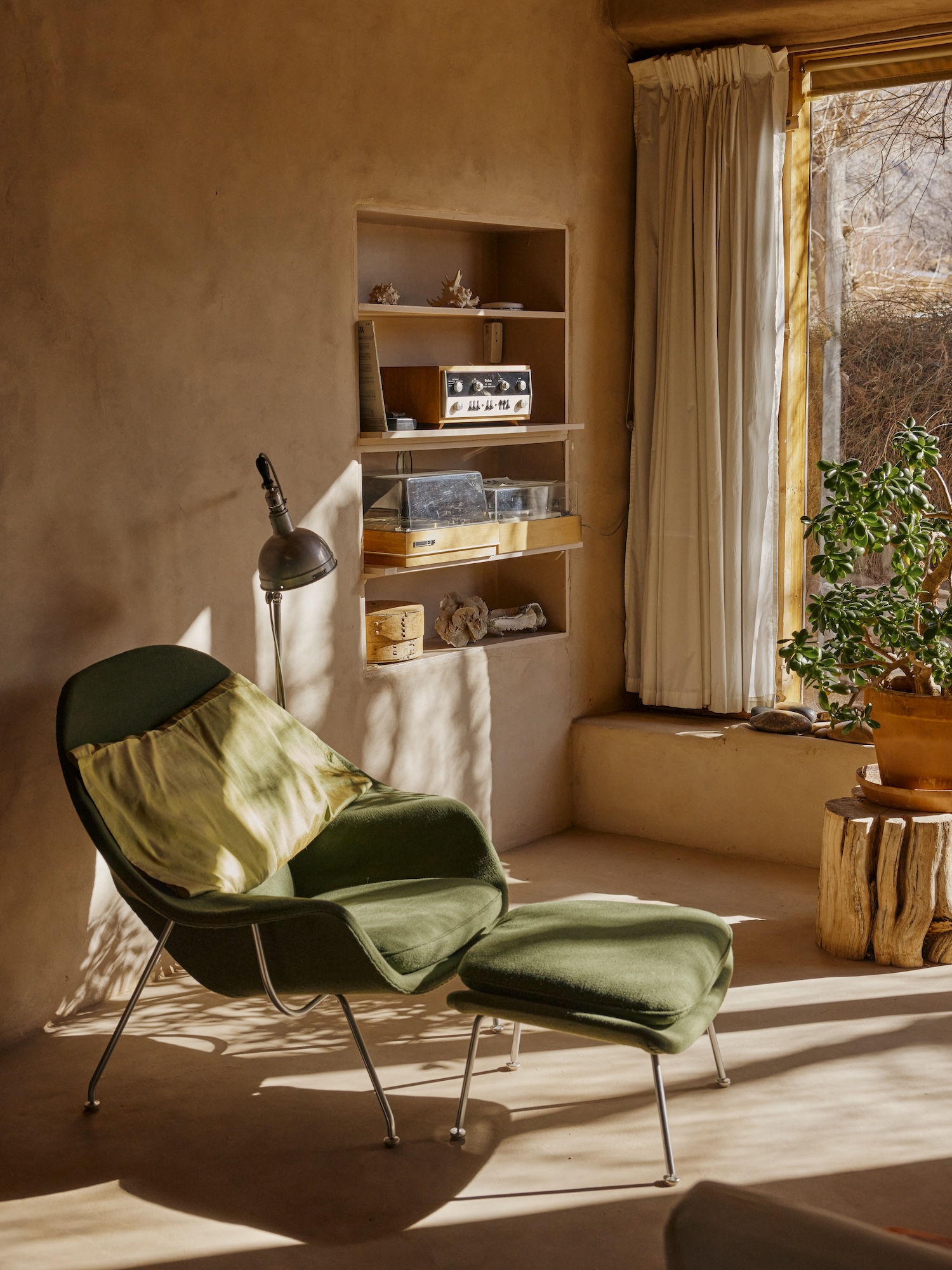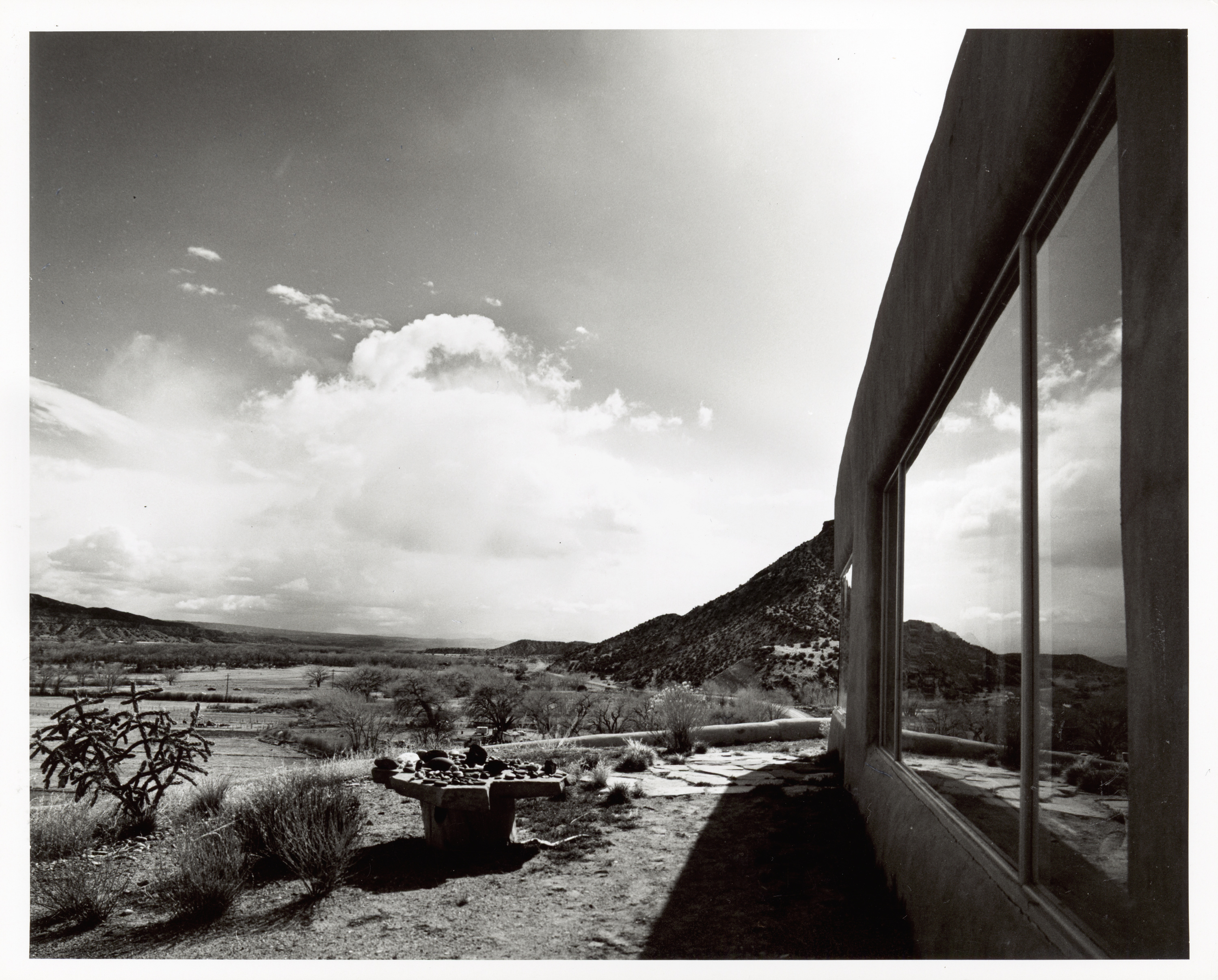
When the designs of the Finnish textile, clothing, and houseware company Marimekko entered the American fashion vernacular in the 1960s, the brand was quickly adopted by the intelligentsia for its focus on comfort, function, and modern textile patterns. Even in rural New Mexico, O’Keeffe stayed up to date on fashion trends, and Marimekko’s popular designs were perfect for her lifestyle. The co-founder Armi Ratia stated, “Our clothes must be loose and express movement …They are part of modern interiors and modern life!”
While Marimekko textiles are often recognized for their saturated color palettes and busy patterns, O’Keeffe opted for the more subdued pieces featured here. The light cotton fabric kept her cool in the summer, and the loose fit allowed her to move with ease as she explored the desert landscape. Additionally, the pockets offered the perfect places for O’Keeffe to store the rocks she picked up on her daily walks.
Marimekko dresses also played an important role in O’Keeffe’s carefully honed image. When trying to achieve a more candid persona in photographs, she often wore a Marimekko dress, appearing relaxed and casual— as opposed to the iconic black wrap dresses she donned for many formal portraits. The first photographer to capture her in a Marimekko dress was her good friend, Todd Webb.
Marimekko did not only bring fun patterns and saturated colors to Americans’ closets, but the company also produced homeware textiles as well. O’Keeffe used Marimekko oilcloths, a type of fabric made waterproof with a coating of boiled linseed oil, to cover tables and cooking surfaces in her kitchen. Although she often embraced neutral color palettes and minimalism in her interior decor, O’Keeffe always incorporated a pop of bright color or the occasional busy pattern in a room.





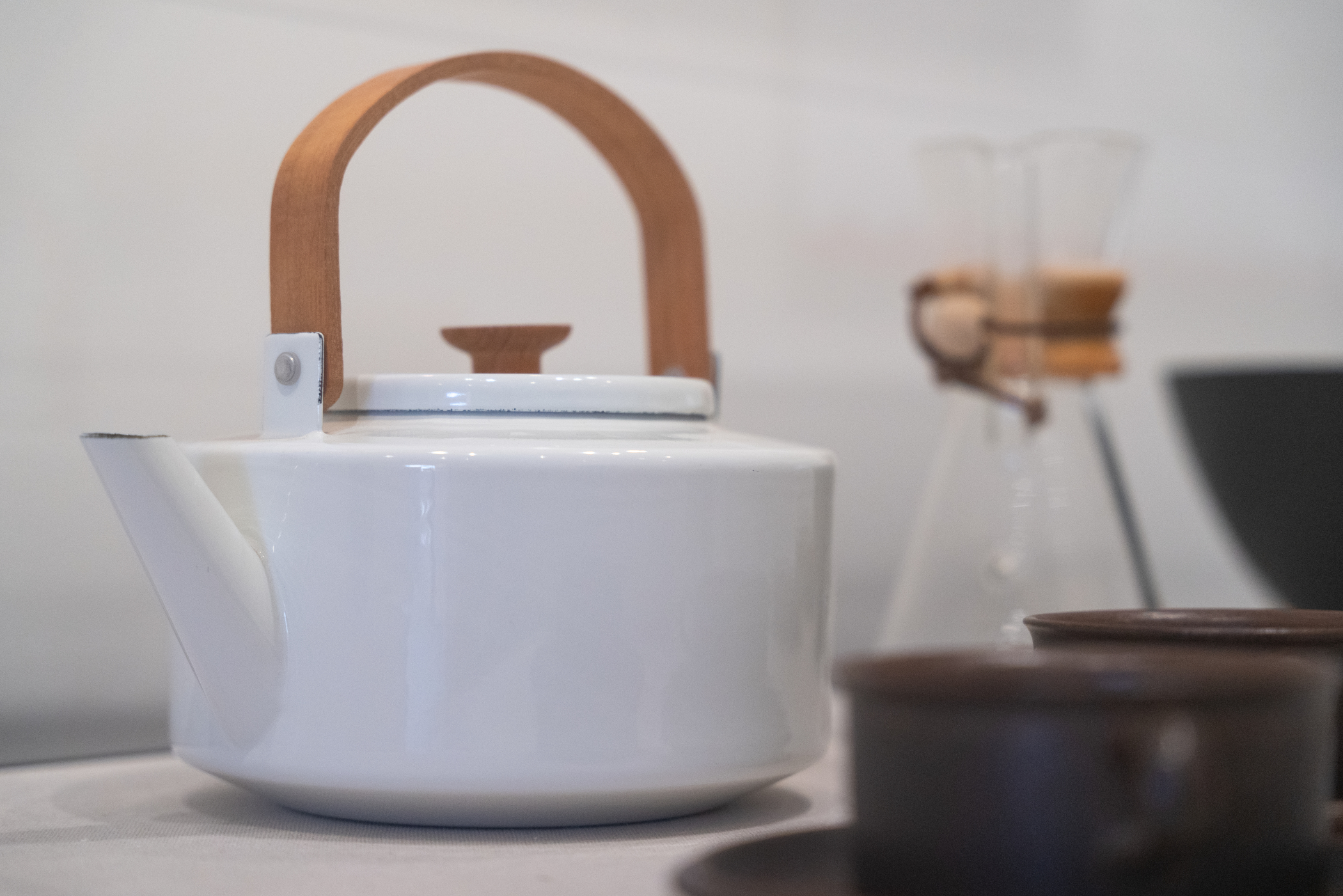


![A note using cursive writing that says: 'for dear georgia [heart shape] c+r -eames 1979'.](/artful-living/_assets/images/figures/2007-4-8_Eames_13.jpg)
